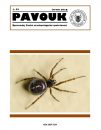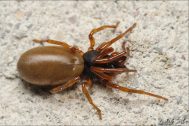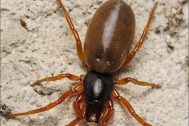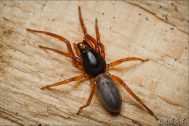The genus Dysdera Latreille, 1804, a species-rich group of spiders that includes specialised predators of woodlice, contains several complexes of morphologically similar sibling species. Here we investigate species limits in the Dysdera erythrina (Walckenaer, 1802) complex by integrating phenotypic, cytogenetic and molecular data, and use this information to gain further knowledge on its origin and evolution. We describe 16 new species and redescribe four poorly known species belonging to this clade. The distribution of most of the species in the complex is limited to southern France and the north-eastern Iberian Peninsula. The species studied do not show any obvious differences in habitat preference, and some of them even occur sympatrically at certain sites. They probably feed on the same type of prey as they readily capture woodlice. On the other hand, they differ in body size, mouthparts shape, sculpturing of carapace, morphology of the copulatory organs, karyotype and DNA sequences. Experimental interspecific mating showed a partial precopulatory behavioural barrier between Dysdera erythrina and Dysdera cechica, sp. nov. Our data suggest that karyotype evolution of the complex included chromosome fusions and fissions as well as translocations (between autosomes as well as autosomes and sex chromosomes). We hypothesise that chromosome rearrangements generating reproductive incompatibility played a primary role in speciation within Dysdera complexes. Dysdera spiders are poor dispersers, and their original distribution areas (forested areas in the Mediterranean) were repeatedly fragmented during Quarternary climatic oscillations, facilitating integration of chromosome rearrangements into karyotypes by genetic drift. Sympatric occurrence of closely related species may have been promoted by prey segregation as suggested by differentiation in body size in co-occurring species. The following new species are described: D. catalonica, sp. nov., Dysdera cechica, D. dolanskyi, sp. nov., D. fabrorum, sp. nov., D. garrafensis, sp. nov., D. graia, sp. nov., D. kropfi, sp. nov., D. minairo, sp. nov., D. portsensis, sp. nov., D. pradesensis, sp. nov., D. pyrenaica, sp. nov., D. quindecima, sp. nov., D. septima, sp. nov., D. stahlavskyi, sp. nov., D. tredecima, sp. nov. and D. undecima, sp. nov.







